Penn Sargus 8000 : The Review
Hello
For those who are not familiar with yours truly, I am not a professional writer nor am I affiliated with any maker, or anyone in the industry. I am just someone who loves to fish, admires the tools of the sport, and loves to share the little he learns.
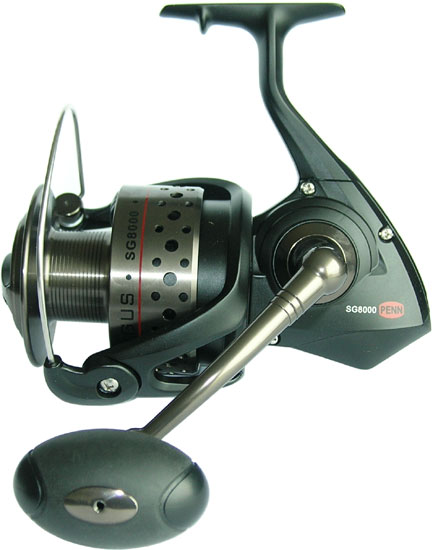 The reel examined today is the Penn Sargus 8000. It's the biggest of the Sargus series which begins with the tiny 2000 reel. This reel follows a trend that is becoming more popular each year; sealed drag full metal bodied reel with a full time instant anti-reverse. They have been popping up in increased numbers over the past few years by makers who decided that anti-reverse switches are useless. Many fishermen would agree.
This shot is for size comparison. Not a small reel by any measure.
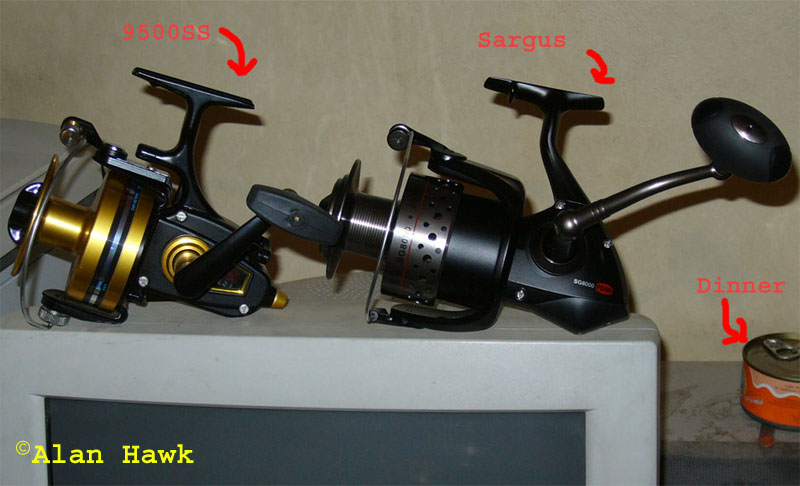 Yes, I'm addicted to canned Tuna
 When I first saw the Sargus, it looked quite familiar, then something flashed in my head; the Pflueger Infusion! They are not just alike, they are actually the exact same reel inside out, only one dressed in Penn colour schemes and the other in Pflueger's.
But is it really a Pflueger? Absolutely not. Not even a Penn. Pflueger effectively vanished when the company was acquired by Shakespeare in 1965, and Penn vanished years ago when it was sold to a conglomerate that mainly focuses on lower cost production and maximum profit regardless of such things as a brand's character. Those reels are now made in China by contractors who don't care if the reel is going to be called a Penn, a Pflueger, a Mitchell, a Shakespeare, or an Abu Garcia, all are brands that are now owned by the same conglomerate. Gone are the days when my father used to call Penn for spare parts and hear a familiar voice who in turn recognises my old man and asks him if little me has been hooked on the sport yet.
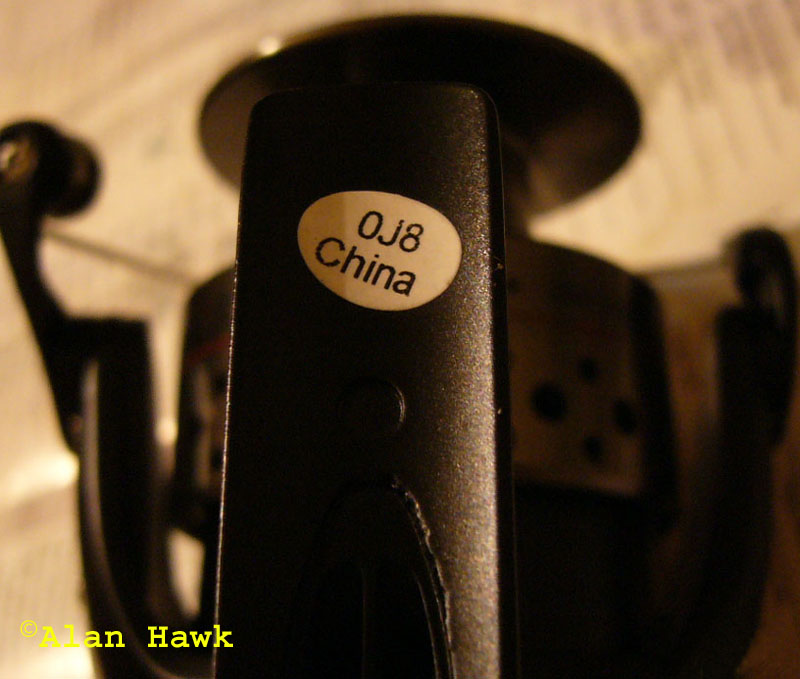 Nostalgia aside, let's evaluate the reel objectively.
In flesh the reel is a mixed bag. It's extremely smooth when you turn the handle, easily one of the smoothest spinners in this price range. It's also a free spinning reel, but once put under load that pleasant feeling disappears
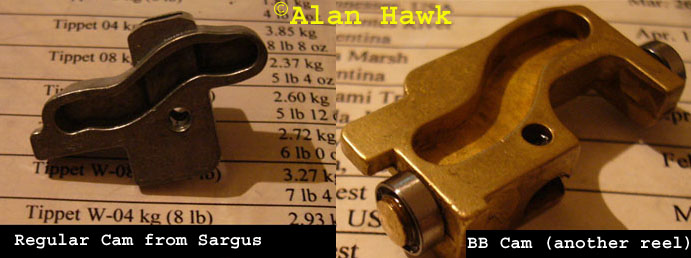 This is why it feels different under load; the Sargus has a traditional traverse block (left) which rubs against the reel's body under load. Good spinning reels are increasingly coming with a ball bearing traverse block (right) for easy winding under load.
At 6.2:1 ratio for the 2000 and 5.3:1 for he 8000, the reel is certainly a high speed one, yet it does not retrieve line at the rate expected because of the relatively small spool diameter. A reel of a lower gear ratio can retrieve more line per handle turn than a reel of a faster ratio if the diameter of the spool of the slower reel is considerably larger.
 The drag knob has a mounted rubber seal to keep water out of the drag stack. Also seen here is that the black pressure disc is keyed to the main shaft so that it won't accidentally turn when the spool spins during a fight. A mechanism that prevents such accidental turning is required when the knob has a seal because the friction between that seal and the spool can make the knob turn on its own.
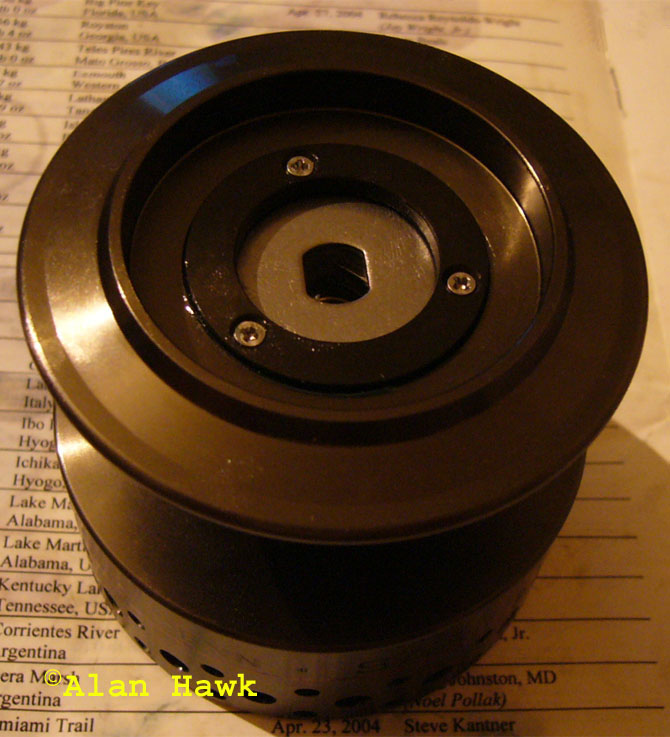 The drag washers of the reel are retained by a retainer with 3 screws. Nicer design than the simple wire spring found in many reels, although not as easily accessible for cleaning.
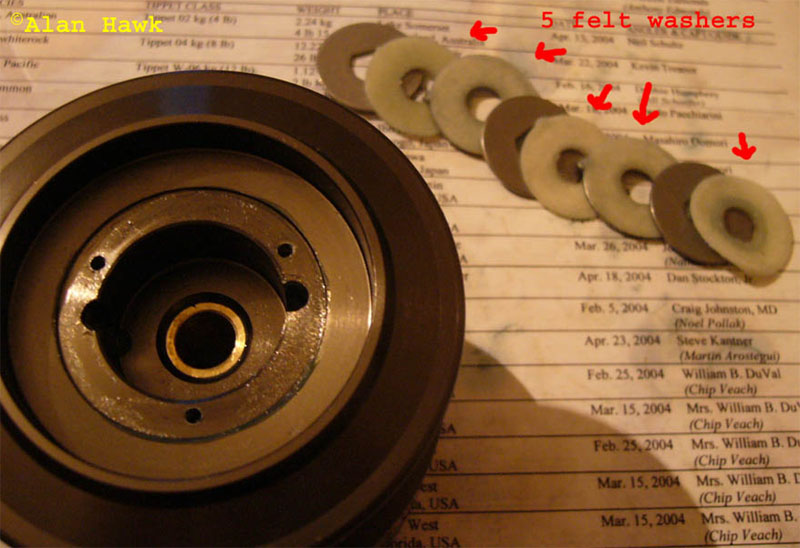 The washers are made of felt, meaning they don't need regular cleaning and are on the durable side compared to modern carbon washers. The downside here is that felt can't handle high temperature nearly as good as carbon fibre, so the reel is strictly a lighter applications tool. Those grease impregnated washers produce 27.4 lbs of maximum pressure without needing to struggle with the drag knob.
I tested the reel casting from the surf for sea bass, having some reports I heard about premature bail closure in the back of my head as I did. I tried hard, but no matter where the rotor was during a cast I couldn't get the bail to close prematurely. The reel performed very well with power pro, giving no troubles or wind knots during casting and retrieving.
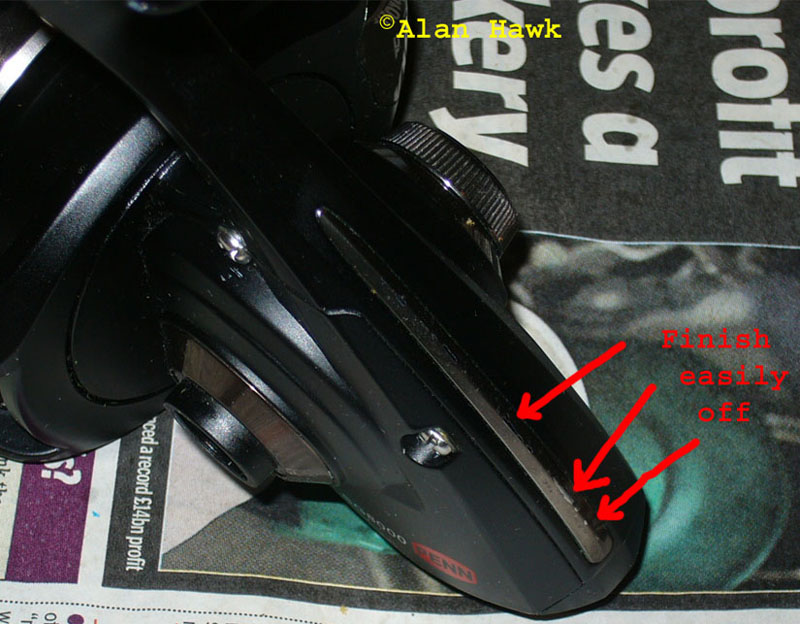 The reel's finish is quite good and didn't scratch easily, but that long narrow guard on the rear of the body (red arrows) lost its rubbery finish very easily with the slightest contact.
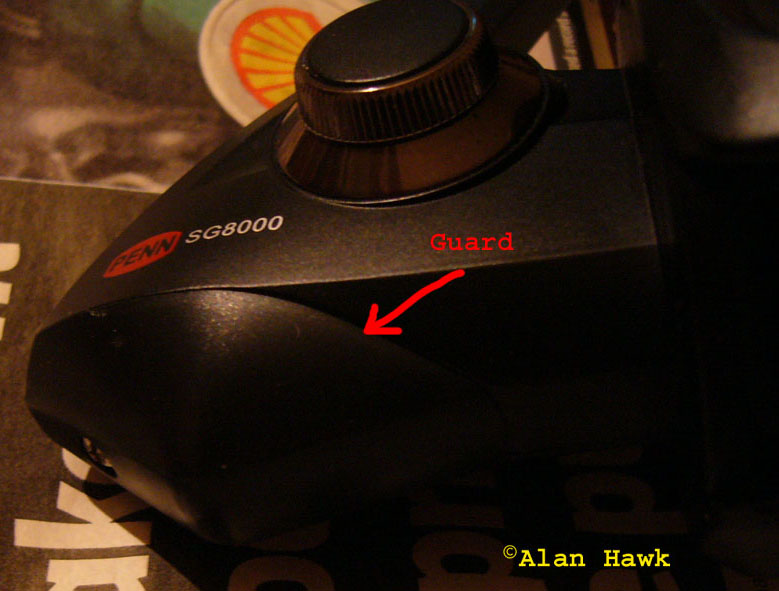 There is a second plastic guard on the rear that does its job. Nothing is wrong with it being plastic by the way as it is supposed to be a bumper to take scratches and dents, thus aluminium isn't the best choice.
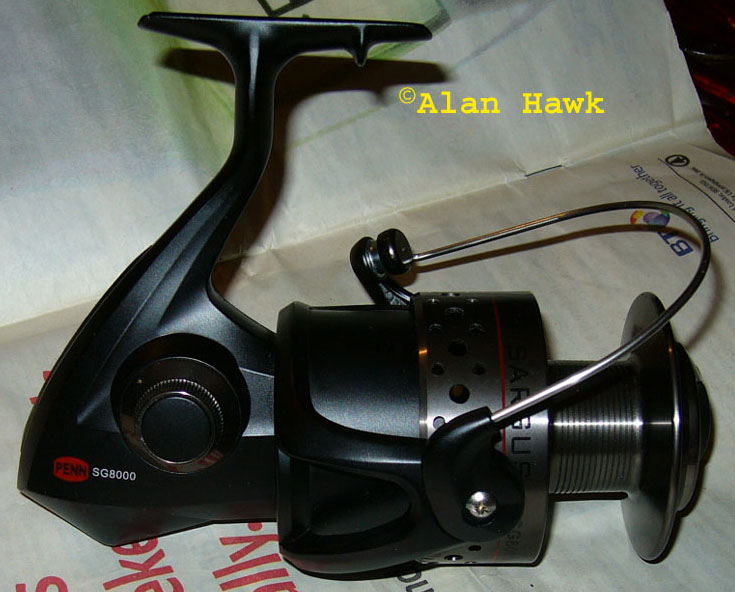 The body is compact and less boxy than other Penn reels.
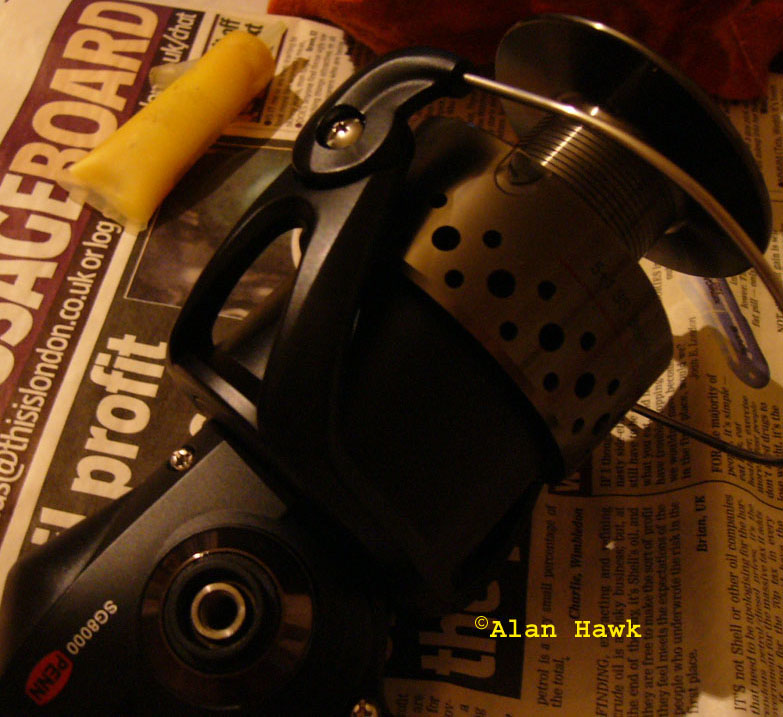 It has a slotted rotor, and drillings in the spool to reduce weight and accordingly inertia.
Now that I have put enough mileage in it, it's time for surgery.
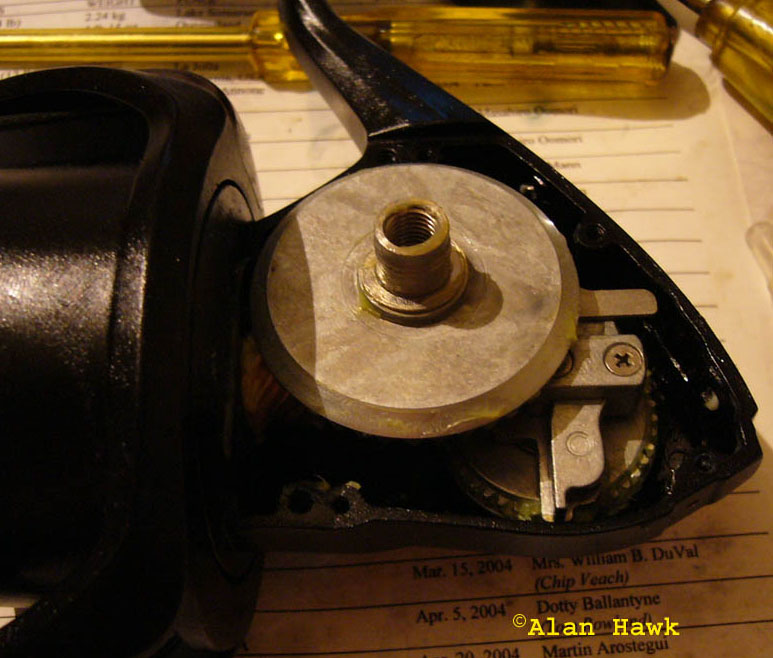 At first look, nothing special. Just the generic gearbox arrangement found on 95% of all spinning reels.
Then this pleasant surprise
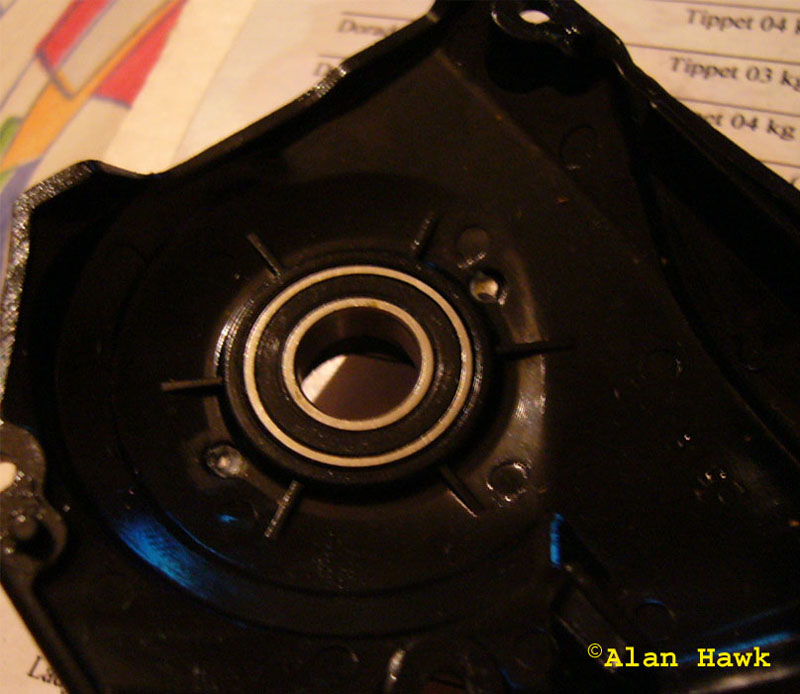 A closer look...
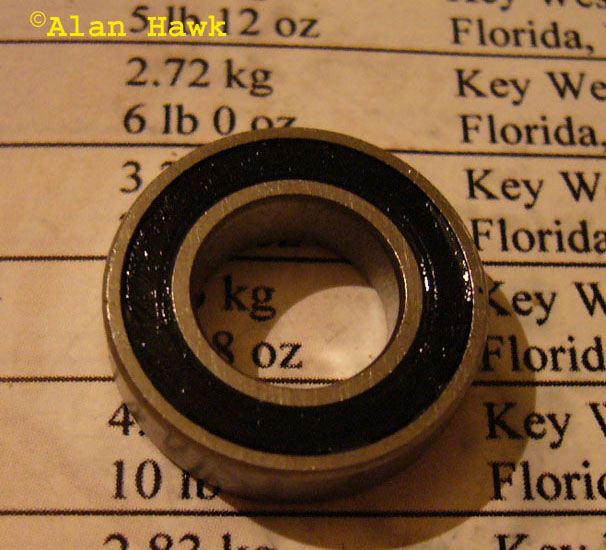 Yep, a sealed ball bearing. The reel has one of these on each side of the drive gear's axle. Sealed bearings are different from shielded bearings; sealed ones have rubber seals between the two races, which makes them completely waterproof. In the Sargus's case they also protect the opening of the handle from water intrusion. They fit tightly enough in the housing to stop water from getting in if the reel is splashed.
The drive train out, cleaned of the old grease
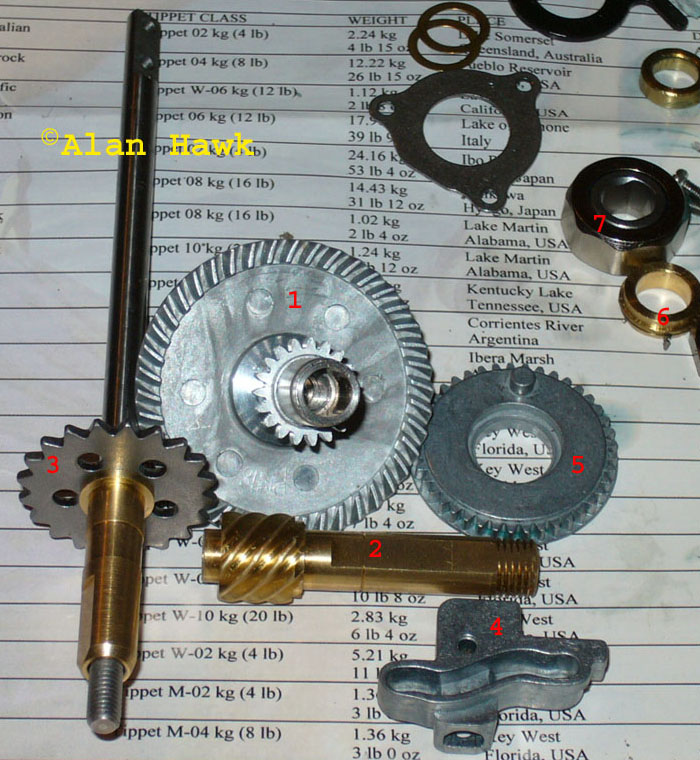 1) Drive gear 2) Pinion 3) Main shaft 4) Traverse block 5) Traverse gear 6) Brass bushing that goes in the centre of the traverse gear 7) The one way clutch.
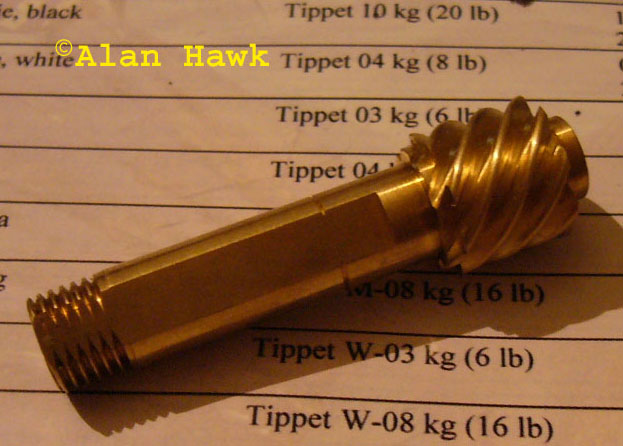 Individually examined, pinion is made of machined brass. A solid durable piece.
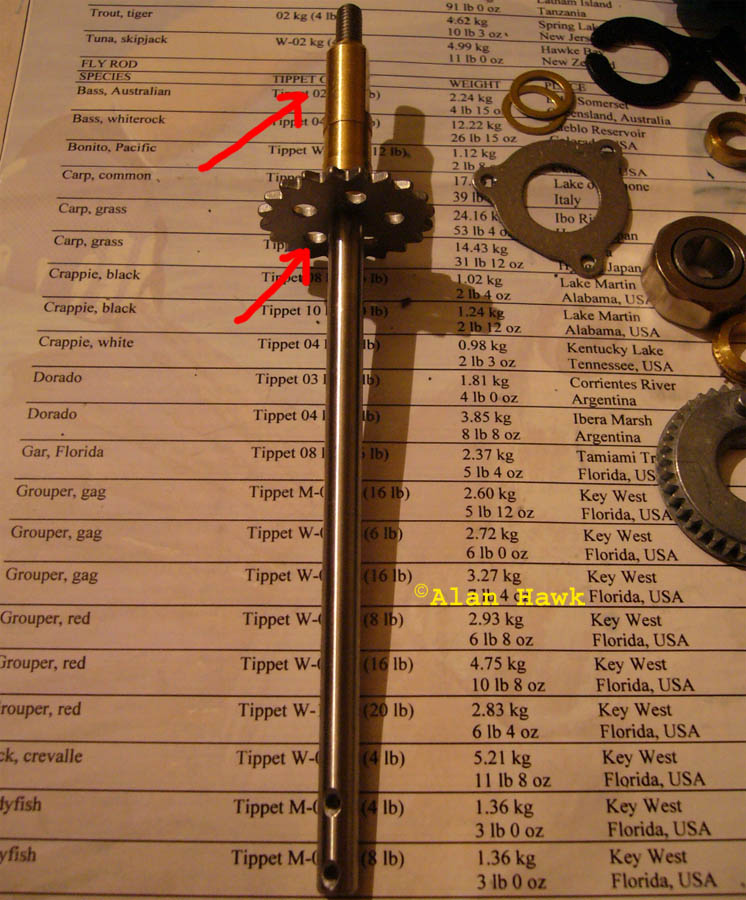 Main shaft is stainless steel. The clicker gear has holes to reduce weight, and the spool hub is brass.
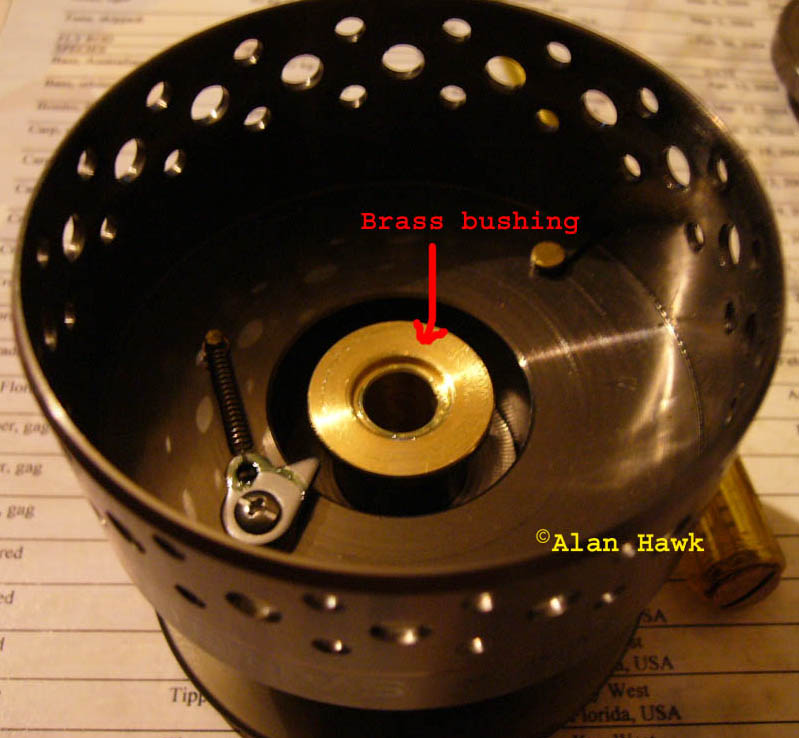 The brass hub paired with the brass bushing in the centre of the spool guarantee smoothness of motion and longevity.
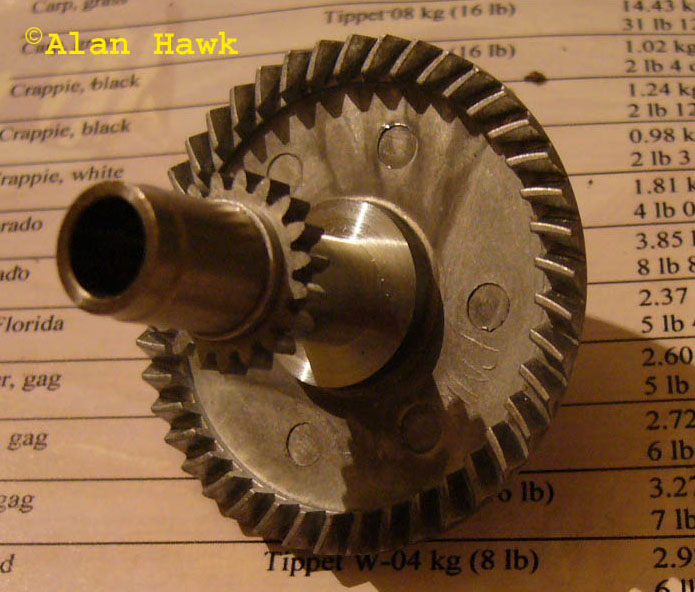 The drive gear is the biggest fault of this reel. Gears range in material and construction methods from moulded plastic to ultra sophisticated cold forged surface treated ones, and this cast zinc gear of the Sargus is positioned near the bottom of the list. The gear is neither strong nor durable, and being a die-cast makes its ductility and shock resistance quite low. This gear continues the trend of poor drive gears in newer Penn reels, and the stripped gears of the SSM series are there to prove it.
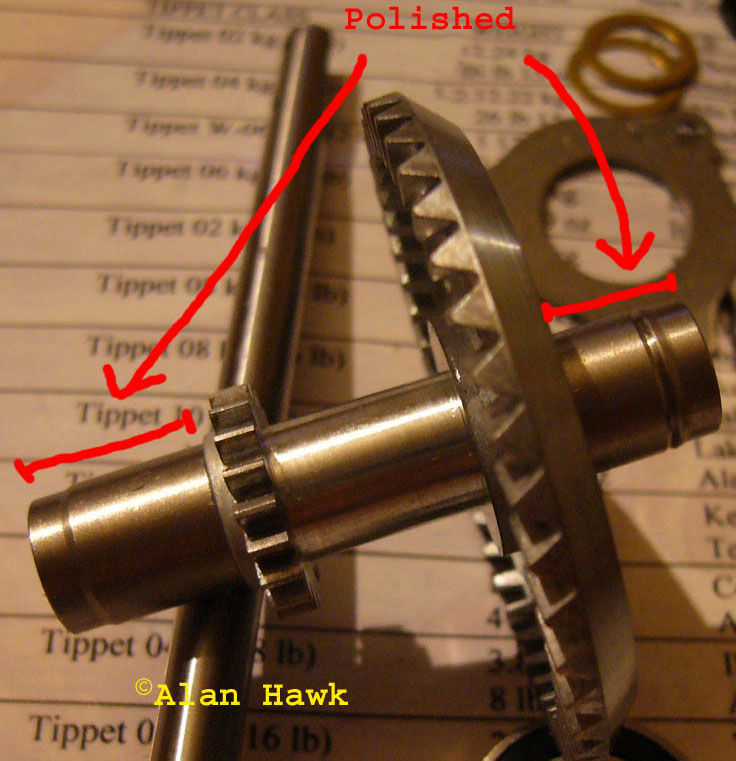 The gear's axle is polished to a shine resembling that of the stainless steel, so at first I thought the axle was actually stainless steel embedded in the zinc gear. It didn't feel like steel to me though.
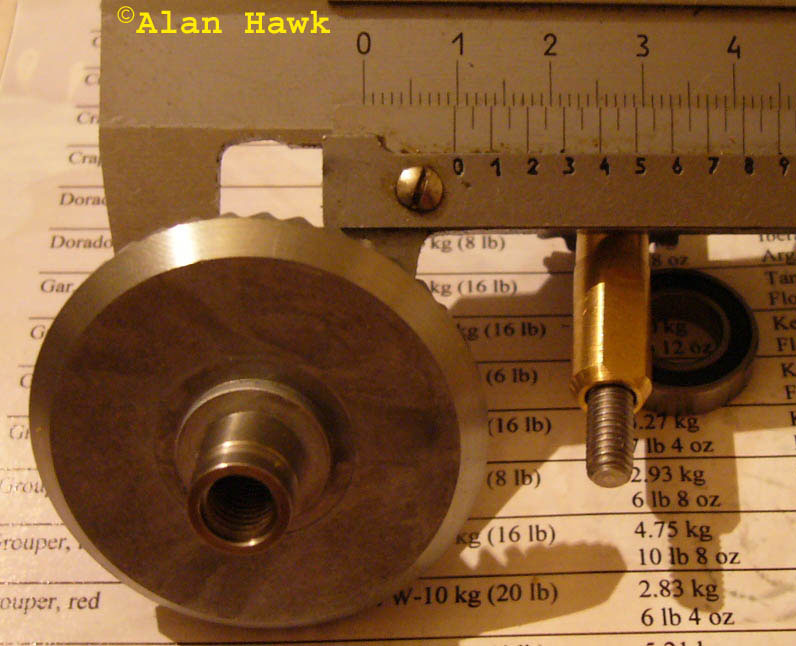 To be absolutely sure, I measured the diameter of the axle on both ends, then the diameter of the middle section of it, and it turned out that the diameter was smaller in mid section meaning that it can't be an embedded shaft or it would have had a uniform diameter.
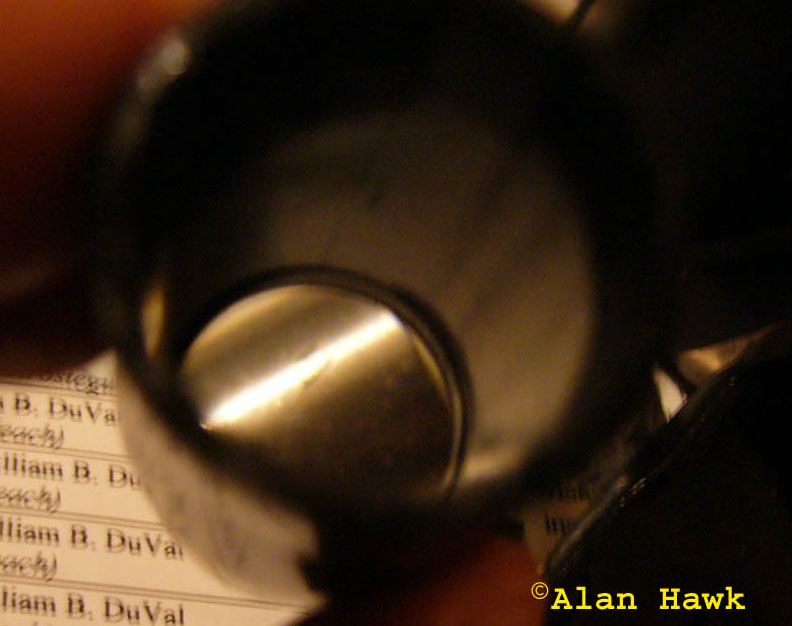 I decided to scratch the shiny polished surface and see, and it got scratched easily and metal shavings were left on my knife as can be seen under the magnifier. No doubt that the entire gear unit is a single piece of cast zinc alloy.
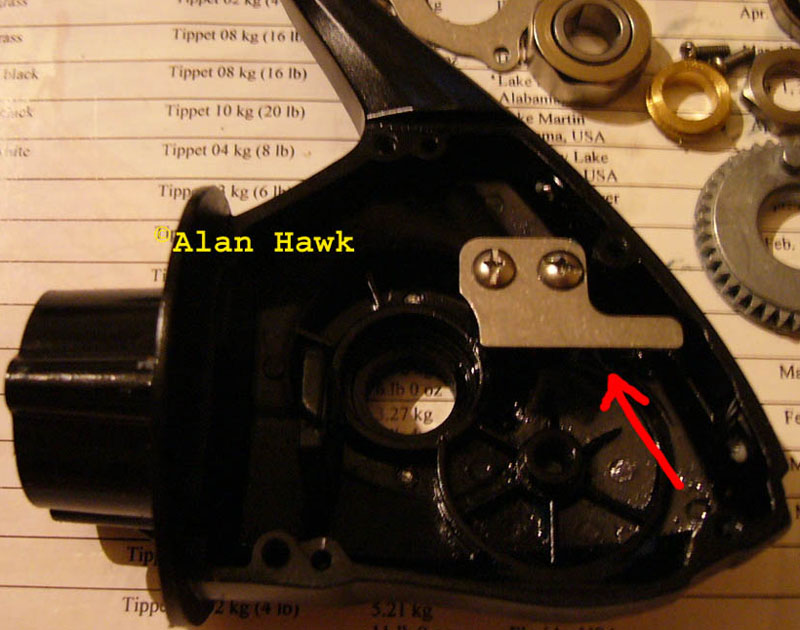 This metal plate controls the movement of the traverse block for smoother and quieter operation.
The one way clutch
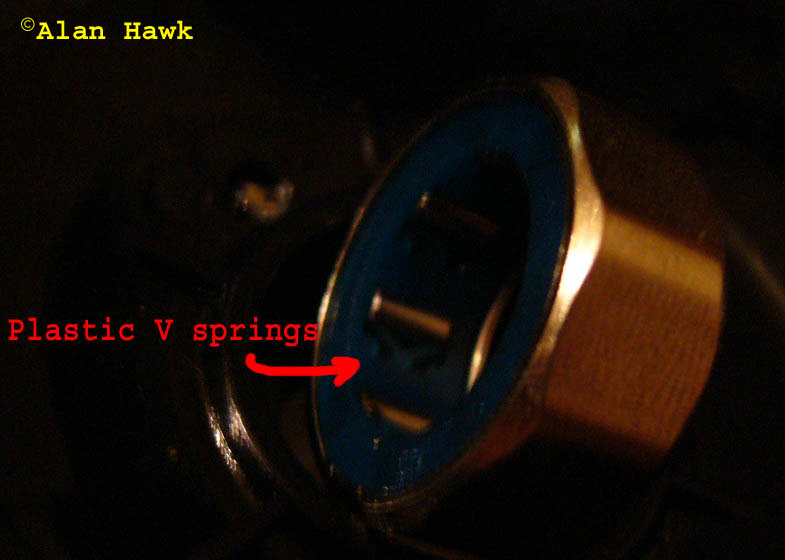 There are two types of one way clutches; one that uses springs to instantly push the cylinders to the locked position once the motion stops, and another type that has no springs in which the cylinders will roll back a very small distance before they reach the locking position. Both types have pros and cons; spring type gives absolutely no back movement, but during rotation the springs are kept in a constant state of compression which makes the reel slightly heavier to spin and eventually wears the springs out. Non-spring type will have a slight back play, but the lack of springs means the reel would feel lighter to spin and there are no springs to wear out. Cheaper spring type clutches has plastic V springs as seen in the Sargus in the above photo, while better quality ones would use metal V springs or coil springs.
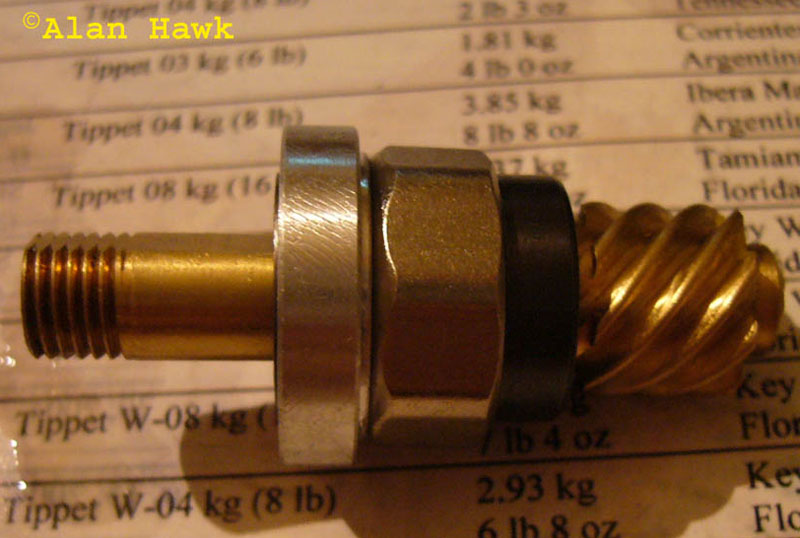 The pinion/bearing/clutch assembly.
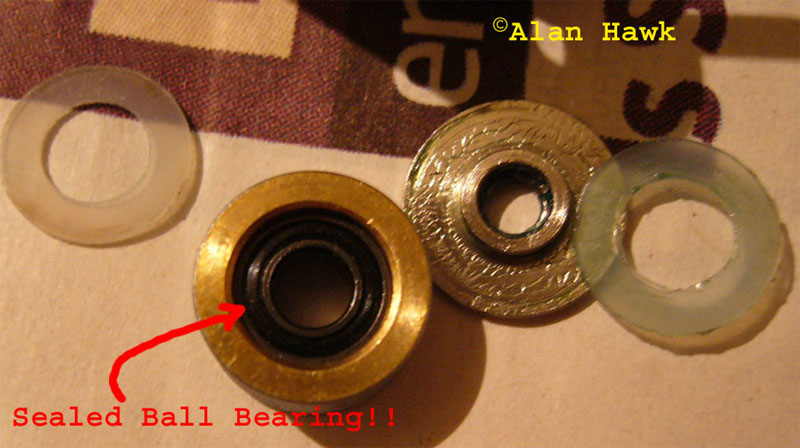 The line roller's components. The line roller has another sealed ball bearing to run on.
The emergency mechanical anti-reverse
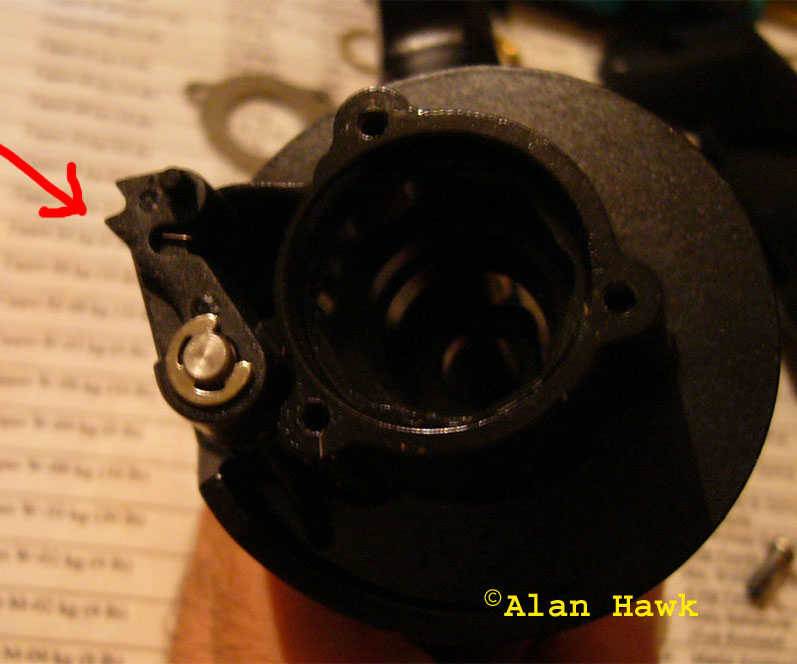 The pawl (red arrow) is connected to the pinion via a wire spring that keeps it tucked away as long as the rotor spins in the right direction, but if the one way clutch fails and the rotor begins to move backwards, the spring pushes the pawl out to engage one of the teeth cast in the back of the rotor
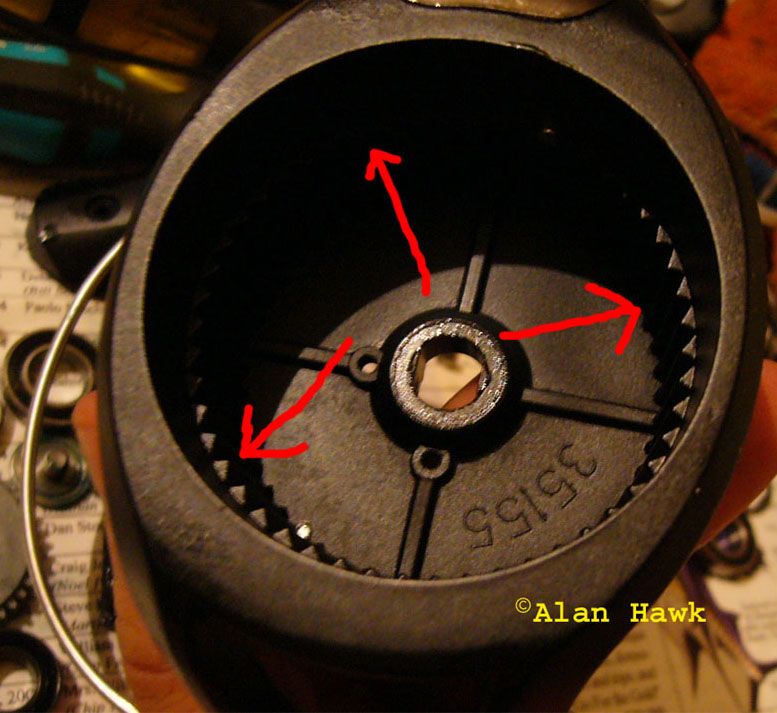 Here they are. That emergency anti-reverse would let you continue fishing until the one way clutch is repaired.
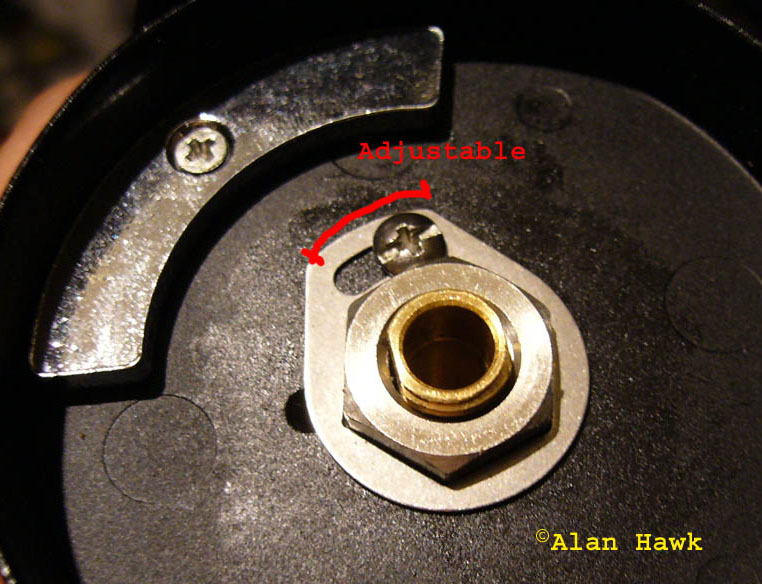 Finally, a multi-position rotor nut lock. Not groundbreaking or anything, but nicer than a simple security screw that requires you to precisely align the nut which can be troublesome for many.
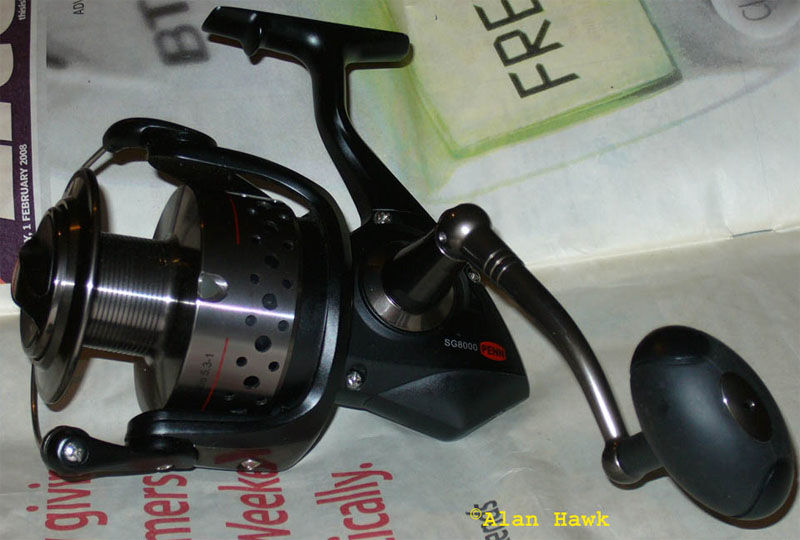 Here is a photo of the reassembled reel to prove that no reels were harmed in the making of this review
 As I said in the beginning, the reel is a mixed bag. The drive gear is certainly the weak link, still I was more than happy with the smoothness and features they could pack into a $74 reel. Certainly a good value for the money. I am neither recommending it nor advising against it here. The bag is so mixed you have to figure out for yourself if you would want one and if it suits your particular needs.
Hopefully I succeeded in giving you a good read.
Cheers
Was this a good read? Please click here
Alan Hawk
November, 6th, 2008
|